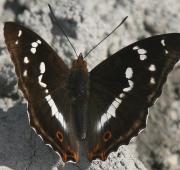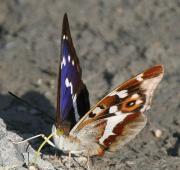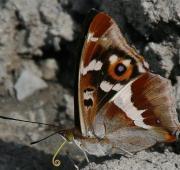 The purple emperor is a distinctive species of butterfly, found in woodlands across Europe. The purple emperor is most well known for the bright blue-purple markings of the wings of the male purple emperor butterflies.
The purple emperor is a distinctive species of butterfly, found in woodlands across Europe. The purple emperor is most well known for the bright blue-purple markings of the wings of the male purple emperor butterflies. The purple emperor is most commonly found throughout central Europe and in the warmer, southern regions of the United Kingdom. The purple emperor is found inhabiting ancient forests and deciduous woodlands where the adult purple emperors spend most of their lives hidden high up in the trees.
The purple emperor is most commonly found throughout central Europe and in the warmer, southern regions of the United Kingdom. The purple emperor is found inhabiting ancient forests and deciduous woodlands where the adult purple emperors spend most of their lives hidden high up in the trees.


Unlike most butterflies, the purple emperor does not feed from flowers but instead on the honeydew secreted by aphids and on dung, urine and animal carcasses, as well as the sap from oak trees.
Eggs are laid by the female purple emperors in late summer on the upper side of leaves, which the purple emperor caterpillars hatch out of. The purple emperor caterpillars are green with white and yellow markings and have two large horns, and soon undergo the incredible transformation from young to caterpillar to adult butterfly.
Today, purple emperor butterflies are threatened in their natural habitats from factors including chemical and noise pollution and even complete habitat destruction in the form of deforestation.

